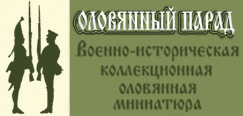Здравствуйте, гость ( Вход | Регистрация )
| Griet |
 3.4.2008, 11:03 3.4.2008, 11:03
Сообщение
#1
|
|
Участник   Группа: Пользователи Сообщений: 1 464 Регистрация: 24.2.2007 Пользователь №: 18 Город: г.Троицк, Красная Пахра, Москва. Военно-историческая группа (XV): Рота Св.Фомы Репутация:  12 12  |
Попалось описание в книге Альберто Капатти ( Итальянская кухня. История одной культуры):
"Многочисленны сорта баклажанов, завезенных арабами в Испанию и Сицилию. Они упоминаются еще в Novellino 34 XIII века и фигурируют в Tacuina sanitatis XIV века, но в течении долгого времени этот овощ вызывал недоверие: само название mela insana35, или "бешенное яблоко", которое мы находим у Скаппи, тому достаточное свидетельство. "Вульгарное растение" - называет его Матиолли, рассказывая об употреблении баклажанов, в первую очередь народом: "Их едят, примитивно обжаривая и посыпая солью с перцем, как грибы"36.Костанцо Феличи тоже относится к баклажанам с подозрением и не разделяет восторга тех кто ест их "жадно(...) да еще и обжаренными".37 34 Lauurioux? Le regne de Taillevent, pp.189 sgg. 35 Книга о кулинарном исскустве 36 См.: Faccioli, L'Arte dalla cucina,Benporat,Cucina Italiana 37 Benporat,Cucina Italiana, p.34 Упоминается довольно часто в книге "Food in Medieval Times" by Melitta Weiss Adamson, Greenwood Press Westport, Connecticut Eggplant Originally from India, eggplants were introduced to medieval Europe by the Arabs, but outside Spain and Italy only found slow acceptance. In the Spanish recipes they are usually peeled, cored, and stuffed, or chopped, fried, seasoned, and cooked. Medieval medicine warned of the melancholic humor they supposedly generated in the body. In addition to the Arabs, the Sephardim, or Spanish Jews, also had an influence on the cookery of medieval Spain. When the Arabs invaded the peninsula in the eighth century, the local Jews sided with the Arabs against the Visigothic Christians, and Jewish communities soon flour¬ished in the cultural centers of Muslim Spain, such as Toledo, Cordoba, Granada, and Seville. When the Christians reconquered southern Spain from the Arabs, the Sephardim were severely prosecuted or forced to convert to Christianity. Those who by 1492 had not converted were given no choice but to leave Spain. Ironically, the records of the Inquisition, established in 1480 with the goal of identifying and destroying the converted Jews, or Conversos, who were still secretly practicing Ju¬daism, provide a glimpse of what Hispano-Jewish food in the Middle Ages was like. Aside from the general Jewish prohibitions against eating pork or seafood and against mixing meat and milk, two specific Sabbath dishes are mentioned in the sources whose preparation, when discov¬ered by the authorities, would land Conversos in front of the Inquisition. One is the adafina, or buried dish, an elaborate stew usually containing lamb, onions, and chickpeas; the other a cold dish made with eggs, cheese, and eggplant.117 Clearly of Arab origin, or at least inspired by Arab cookery, are the different recipes for eggplant; one of them even announces in the title that it is “in the Moorish style.” To prepare these Albergínies a la Morisca, eggplants are peeled, quartered, cooked well, then squeezed between two boards, chopped, fried with salted pork, and then cooked with fatty meat stock, grated cheese, and powdered coriander. Egg yolks beaten together with verjuice are added just before the eggplants are fully cooked.135 Сообщение отредактировал Griet - 5.10.2011, 15:31 -------------------- To recreate the medieval period without compromise.(с)The Company of St. George
|
Сообщений в этой теме
 Griet Баклажан 3.4.2008, 11:03
Griet Баклажан 3.4.2008, 11:03
 Мистле То есть, кушать на 15-вечных мероприятиях жареные ... 3.4.2008, 15:25
Мистле То есть, кушать на 15-вечных мероприятиях жареные ... 3.4.2008, 15:25
 Andre Grigou Отлично! Делаем жаренные баклажаны с чесноком и сы... 3.4.2008, 16:50
Andre Grigou Отлично! Делаем жаренные баклажаны с чесноком и сы... 3.4.2008, 16:50  |
1 чел. читают эту тему (гостей: 1, скрытых пользователей: 0)
Пользователей: 0
 |
|||||

|
Текстовая версия |
|
Сейчас: 14.11.2024, 12:40 | ||














